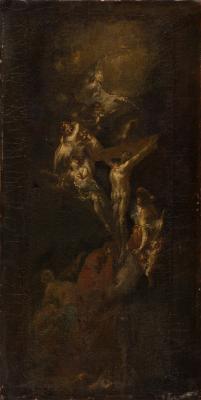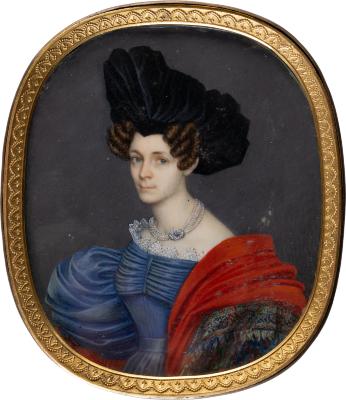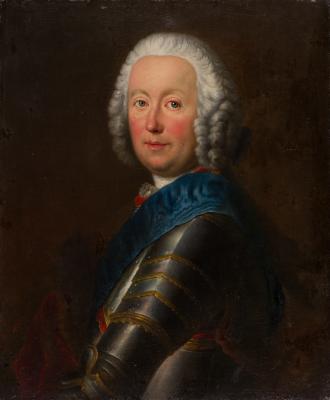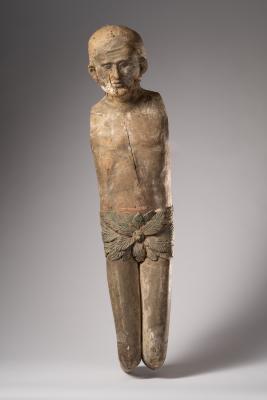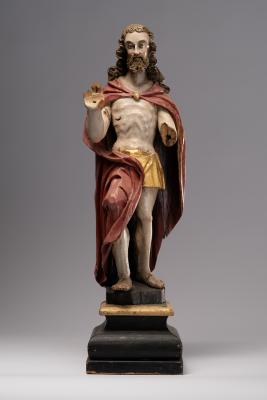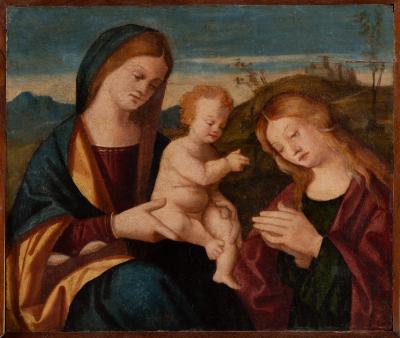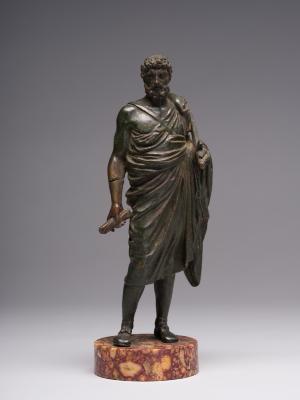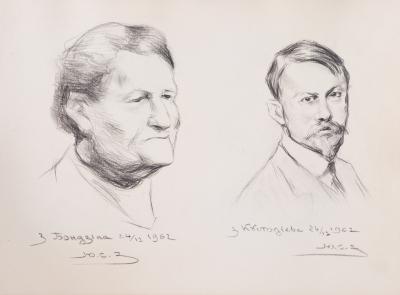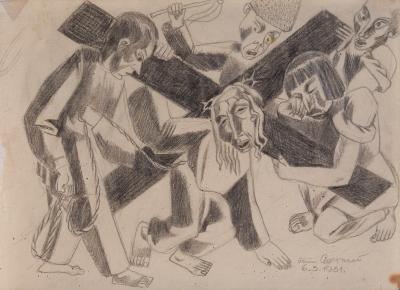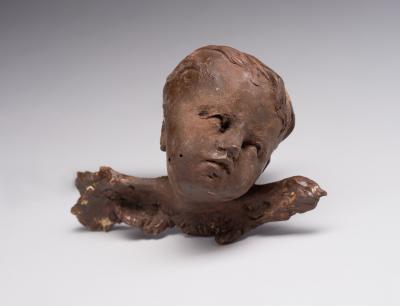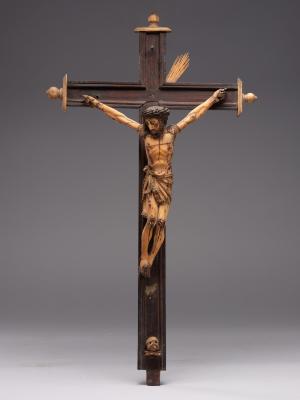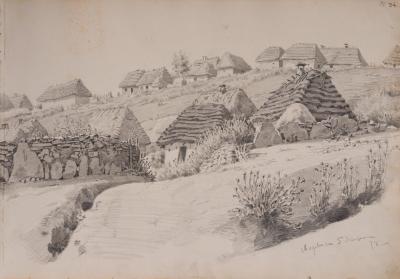The work is from the Roman series. An engraving titled Il Carnacciaro has been known since 1810. A version close to the Lviv engraving was issued in the album dated 1815. The composition, similar to the Lviv one, was issued in a black and white version in the album Nuova Raccolta di Cinquanta Costumi Pittoreschi incisi di acqua forte (New Collection of Fifty Picturesque Costumes) published by Giovanni Scudellari in Rome in 1817. The engraving depicts a young man, carnacciaro, a street vendor of meat for cats, cutting blood-red pieces from a stick with the help of a special knife. Two cats are nearby; one is already eating a piece of meat, and the other is jumping up, demanding his portion. On the right, a big dog does not dare to join the "cat" meal. A young woman, apparently the owner of these animals, is standing next to him on the left; she is leaning her head on her elbow placed on the house wall. There is a wooden chair next to her. The woman is watching the young man intently. He is elegantly dressed in a blue jacket, knee-length trousers, and white stockings. The young man is girded with wide yellow and red belts, and there is a white tie around his neck. A black hat is on his head, and black shoes with overlays are on his feet. A bag with kittens is attached to the belt on his back; he also sells them. The young man seems to be posing before a woman while demonstrating his skills. She is modestly dressed in a traditional blue apron over a white blouse, a long crimson skirt, and black shoes; she has a bonnet on her head. The action occurs in the background of the city wall, depicted in blurred ochre and pink and grey and blue tones of watercolour. The depth of the composition is created by the image of a house with an arched entrance; it is shown at an angle in the background on his right.
Carnacciaro (also carnicciaro, or carnecciaro) is a carrier (vendor) of meat for cats in southern Italian cities. Carnaccia was a butcher's shop that sold pluck – lungs, rumens, etc. All that was offered to cat owners or those who looked after stray animals. Early in the morning, the carnacciaro walked along the city streets, balancing with a curved stick on his shoulders as pieces of meat were hanging on it. It was enough for him to blow a sordino, and cats and dogs ran out to meet him, thus warning their owners. A piece of meat cost one bajocco (bajocco = 1.5 cents). Carnacciaro also sold kittens, which he kept in a special bag. Cat meat vendors could be seen in Italian cities until the middle of the 20th century. Now in Italy they are replaced by gattara (Italian: la gattara, il gattaro, from il gatto – a cat; English: cat ladies; Turkish: kedili kadın), representatives of the social service.







